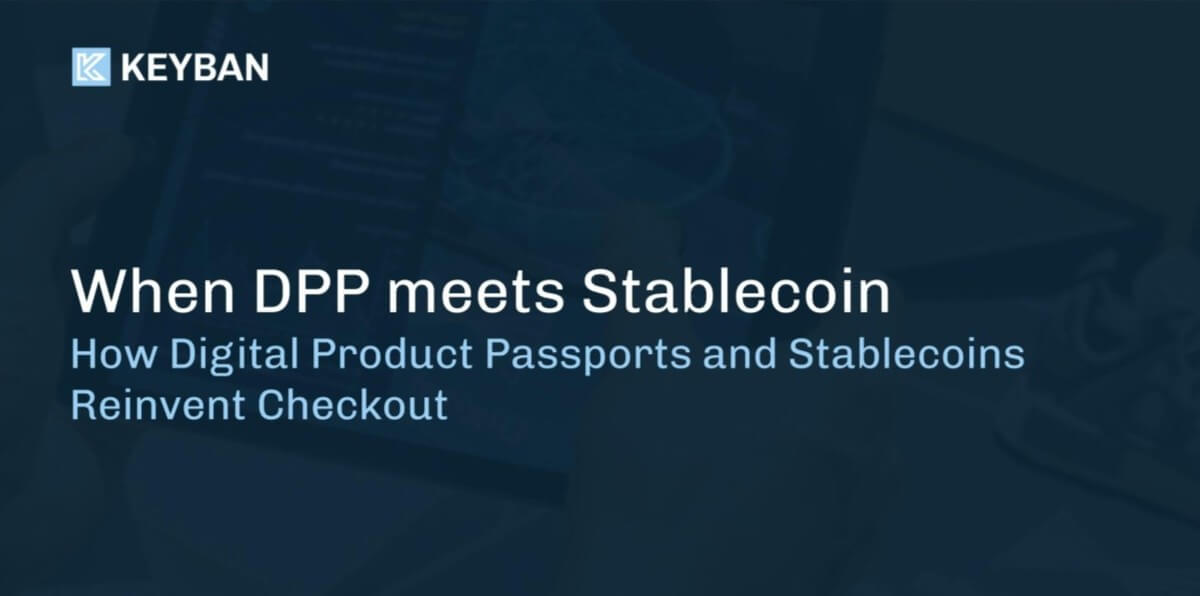The Stable‑Coin Paradox
Visa, Mastercard and even Coinbase’s new x402 protocol have finally delivered what the internet has craved since the 1990s: money that moves at web‑speed for pennies. Stable‑coin payments now clear in seconds, cost near‑zero, and require little more than a card swipe or a signed HTTP header.
Yet merchants, marketplaces and brands still struggle with an older problem: every sale sets off a flurry of disconnected updates.
- Money settles through a PSP.
- Ownership flips somewhere in an ERP.
- Warranties are activated in a CRM.
- And if that item is ever resold or recycled? A new paper trail – usually manual – begins again.
Cheaper payments alone don’t fix that fragmentation. They simply speed it up. What’s missing is payment in context – a single atomic action that moves the money and the state of the thing being bought.
Digital Product Passports – The Pillar of Contextual Payments
Digital Product Passports (DPPs) give every item a verifiable digital twin. Money, ownership and rights travel together: one on‑chain transaction moves the stable‑coins and shifts the passport to the buyer, keeping payment and product perfectly in sync.
The moment the buyer’s stable‑coins settle, the passport flips, the event—first sale, resale, repair or recycling—is written to an immutable ledger, and any preset rule (warranty activation, royalty, commission) fires instantly.
Why It Matters
- One Truth – No Reconciliation – Payment, ownership and lifecycle data land in the same ledger entry. No spreadsheets, no nightly sync jobs.
- Lean Tech Stack – A single on‑chain call updates payment and product status, trimming middleware licences and support costs.
- Tamper‑Proof Resale – Every genuine item carries its passport; any transfer without payment—or any item without a passport—fails automatically.
- Compliance by Construction – EU Digital Product Passport rules are met the instant the transaction settles.
- Agent‑Friendly Data – Open, tamper‑proof records let AI agents safely buy, sell, insure or recycle assets for users.
Four Moments Where Contextual Payment Wins
1. First Retail Sale
A customer clicks “Buy Now” on a brand’s web‑shop. Behind the button, the DPP rail splits €1 000 EURS: 95 % to the merchant, 5 % into a logistics escrow. A fresh DPP NFT plus a warranty token land in the buyer’s wallet. The shipment trigger and DPP compliance record fire off the same block. No other systems need to talk.
2. Peer‑to‑Peer Resale
Six months later the customer sells the appliance on a marketplace. The buyer pays €450 EURS, the DPP flips ownership, the marketplace contract siphons its commission, and provenance is preserved. A chargeback is impossible – there is nothing to reverse.
3. Subscription / Pay‑Per‑Use
For products that charge by the cycle – think industrial printers or gym equipment – an IoT meter cues a monthly micro‑payment. If funds fail, the warranty pauses and the device can even lock itself. Billing, enforcement and analytics are one line of Solidity.
4. Recycling Deposit Refund
At end‑of‑life, a certified recycler scans the product’s QR code. A recycle() call burns the NFT’s transferable flag, releases a 30 EURS deposit from escrow to the consumer, and pushes an immutable recycling proof to the brand’s ESG dashboard.
Payments in Context – The Next Leap for E‑commerce
Moving money is yesterday’s problem; moving money plus meaning is today’s opportunity. A DPP payment rail makes every checkout a single, trustworthy hand‑over of cash, ownership and compliance.






